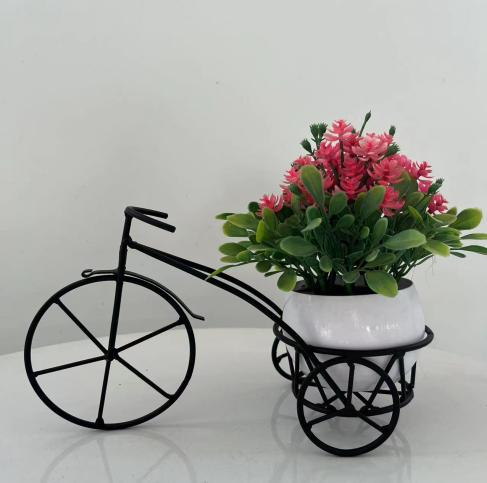Common materials of Plant Stand
2023-12-28
Plant stands come in various materials, each offering different aesthetics, durability, and suitability for indoor or outdoor use. Some common materials used for plant stands include:

1. Wood: Wooden plant stands are popular for their natural look and versatility. They can be made from various types of wood, such as pine, oak, cedar, or teak. Wood blends well with different home decor styles and can be stained, painted, or left natural to match interior designs.
2. Metal: Plant stands made of metal, such as wrought iron, steel, aluminum, or brass, offer sturdiness and durability. They often feature intricate designs and can withstand outdoor conditions if they are appropriately treated or coated to prevent rust.
3. Wicker or Rattan: Wicker or rattan plant stands provide a lighter and more natural appearance. They are often used indoors and can complement bohemian, tropical, or coastal decor styles. These stands may be less suitable for outdoor use, especially in harsh weather conditions.
4. Ceramic or Pottery: Some plant stands are crafted from ceramic or pottery materials. These stands can be decorative and come in various shapes, colors, and designs. They are commonly used indoors and add visual interest to spaces.
5. Glass: Glass plant stands often feature glass shelves or tabletops supported by metal or other materials. They offer a sleek and modern appearance and are suitable for indoor use to display smaller potted plants.
6. Plastic or Resin: Plant stands made from plastic or resin materials are lightweight, affordable, and often weather-resistant, making them suitable for outdoor use. They are available in various colors and designs.
7. Concrete or Stone: Sturdy and robust, plant stands made from concrete or stone provide stability and durability, especially for larger or heavier plants. They are commonly used outdoors and can withstand various weather conditions.
The choice of material for a plant stand often depends on personal preference, intended use (indoor or outdoor), the weight and size of the plants, the desired style or aesthetic, and the level of maintenance required. Consider the specific needs of your plants, the environment they will be placed in, and your design preferences when selecting a plant stand material.


